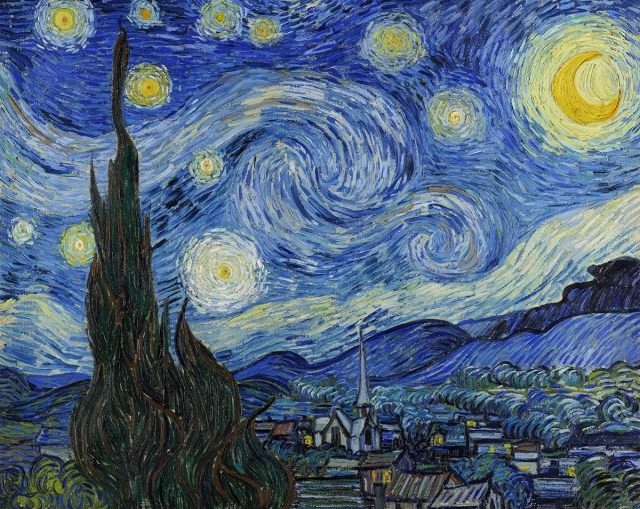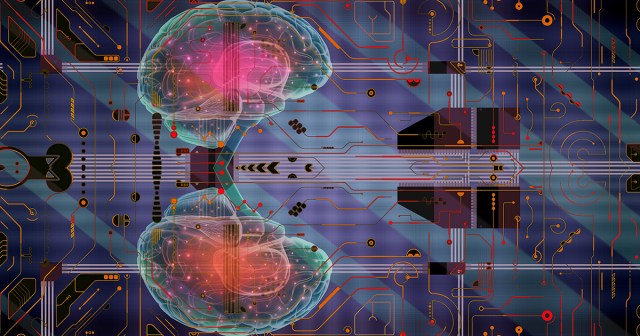
TL;DR
- On four services alone — Midjourney, Stable Diffusion, Artbreeder, and DALL-E — humans working with AIs now co-create more than 20 million images every day.
- AI does not mean that human-made art is over. Instead, the creative process now becomes a possibility for everyone, not just elites. Meanwhile, great artists and artworks can still rise to the top by “sculpting” AI outcomes in cooperation with the machine.
- The convoluted process required to tease a first-rate picture out of an AI is quickly emerging as a fine-art skill.
READ MORE: Picture Limitless Creativity at Your Fingertips (Wired)
Artificial intelligence can already make better art than most humans. Soon, these engines will transform how we design just about everything.
Kevin Kelly, the founding executive editor of Wired, also predicts that not a single human artist will lose their job because of this new technology.
Artists are embracing AI as a “co-creator” in artistic creation not least because the role of the human as creator is not undermined by machine automation.
Kelly has spent six months playing with generative AI tools and contends the artistic process changes, and is enhanced by, collaboration with AI tools. What’s more, the best applications are not the result of typing in a single prompt but of “very long conversations” between humans and machines.
“Progress for each image comes from many, many iterations, back-and-forths, detours, and hours, sometimes days, of teamwork — all on the back of years of advancements in machine learning.”
He likens the introduction of AI to that of early photography.
“When photography first appeared, it seemed as if all the photographer had to do was push the button,” he says. “Likewise, it seems that all a person has to do for a glorious AI image is push the button. In both cases, you get an image. But to get a great one — a truly artistic one — well, that’s another matter.”
Kelly says it’s not uncommon for a distinctive image conjured with the help of AI to have gone through 50 prior steps of iteration. The process includes editing, selection, repeating different parts of the generation, and suggesting replacements to areas of the image, as well as extending the image out into different directions (termed “inpainting”), and even migrating it to Photoshop for finishing touches.
Read It on Amplify: Creativity in the Age of AI
Read It on Amplify: How Exactly is Generative AI a Gamechanger?
Read It on Amplify: Can AI Imagery and Video Actually Be Good for the Creator Economy?
Additionally, the same prompt given to different AI engines produces different images — Midjourney’s are more painterly, while DALL-E is optimized for photographic realism.
“The convoluted process required to tease a first-rate picture out of an AI is quickly emerging as a fine-art skill,” Kelly says. “The art is in the craft of finding a new area and setting yourself up there, exercising good taste and the keen eye of curation in what you capture.”
Behind this new “imagecraft” is the “art of prompting.” Each artist or designer develops a way of “persuading an AI to yield its best” by evolving their prompts. These new artists might be called “AI whisperers, or prompt artists.”
“Above-average” prompts not only include the subject but also describe the lighting, the point of view, the emotion evoked, the color palette, the degree of abstraction, and perhaps a reference picture to imitate.
Skill Sets, Data Sets
If that sounds much like the skill of a film director, then Kelly has already made the analogy.
“What is a consummate movie director — like Hitchcock, like Kurosawa — but a prompter of actors, actions, scenes, ideas?” he says. “Good image-generator prompters are engaged in a similar craft, and it is no stretch for them to try and sell their creations in art galleries or enter them into art contests.”
Read It on Amplify: The One-Human, One-Machine Movie Studio: How AI Can Change Hollywood
Read It on Amplify: The Ways AI Is Going to Revolutionize Filmmaking
The process of working with an AI is likened to some mystical processes, too – largely to do with the opaque way in which algorithms work. Even if you repeat the exact same prompt, you are unlikely to get the same image. “There is a randomly generated seed for each image, without which it is statistically impossible to replicate,” Kelly says.
He interchanges the utilitarian word “prompt” for “incantations” and “spells,” as if the ghost (the muse?) really is in the machine.
“It feels like a miracle,” Pixar director Lee Unkrich (Toy Story 3) tells Kelly, “When the results appeared, my breath was taken away and tears welled in my eyes. It’s that magical.”
Other AI artists have begun to be protective of their own prompting recipes. Mario Klingemann is famous for not sharing his prompts. “I believe all images already exist,” he says in the article. “You don’t make them, you find them. If you get somewhere by clever prompting, I do not see why I want to invite everybody else there.”
Access, Speed and Alchemy
Let’s not kid ourselves that AI is like a paintbrush in the hand of Michelangelo or Van Gogh. There’s no years of blood, sweat and toil that will go into creating a piece of AI art. The whole point is that AI democratizes creation — since anybody can get their hands on AI tools — and it speeds up creation immeasurably.
“For the first time in history, humans can conjure up everyday acts of creativity on demand, in real time, at scale, for cheap. Synthetic creativity is a commodity now.”
Kelly imagines what this means:
For a start, he thinks most AI images will be used in places where there were no images previously.
“They usually do not replace an image created by a human artist,” he contends.
For example, they may be created to illustrate a text-only newsletter “by someone without artistic talent themselves, or the time and budget to hire someone.” He predicts we’ll see “contextually generated images” predominately in spaces that are currently blank, like emails, text messages, blogs, books, and social media.
“Just as mechanical photography did not kill human illustrations a century ago, but rather significantly expanded the places in which images appeared, so too do AI image generators open up possibilities for more art, not less.”
Make Your Own Metaverse (or Cinema Masterpiece)
Beyond still images, though, the real breakthrough in scale comes with 3D imagery and AI-generated video.
“AI could make games, metaverses, and movies as quick to produce as novels, paintings, and songs. Pixar films in an instant!”
He goes further, suggesting that once millions of amateurs are churning out billions of movies and endless metaverses at home, “they will hatch entirely new media genres — virtual tourism, spatial memes — with their own native geniuses.
“And when big dollars and professionals are equipped with these new tools, we’ll see masterpieces at a level of complexity never seen before.”
Ancient philosophers (and artists) will turn in their graves, but it turns out that to be creative — to generate something new — all you need is the right code.
Next, Watch This
AI ART — I DON’T KNOW WHAT IT IS BUT I KNOW WHEN I LIKE IT:
Even with AI-powered text-to-image tools like DALL-E 2, Midjourney and Craiyon still in their relative infancy, artificial intelligence and machine learning is already transforming the definition of art — including cinema — in ways no one could have ever predicted. Gain insights into AI’s potential impact on Media & Entertainment in NAB Amplify’s ongoing series of articles examining the latest trends and developments in AI art:
- What Will DALL-E Mean for the Future of Creativity?
- Recognizing Ourselves in AI-Generated Art
- Are AI Art Models for Creativity or Commerce?
- In an AI-Generated World, How Do We Determine the Value of Art?
- Watch This: “The Crow” Beautifully Employs Text-to-Video Generation


